Chemicals, Rust Repair & How to Fix Rust
In this post we’ll quickly talk about the proper chemicals that you need to treat rust on your vehicle.
When learning how to fix rust, first, identify your rusted area. Grind all bubbles and rust off. Now you want to apply some chemical over the freshly grinded and cleaned area.
If you look around in the market you’ll find many chemicals that you can use. I recommend a few. They are easy to find and they work well.
The first one is Naval Jelly by Loctite. It’s reliable and very easy to use. My father has been using this stuff for over 25 years.
The second is a home made mixture that you can make yourself. Ready?
Vinegar water. Just mix about a cup of vinegar to about a half gallon of purified water. That’s it. You can keep it in a bottle and it will last for about a year or so.
The third chemical is called POR-15. https://www.por15.com/ Be sure to use the Pro 15 marine clean first and follow the manufactures instructions. Easy to use but a bit more on the money side.
Another popular way of removing rust without chemicals is by sand blasting. You can purchase sandblasting media from eastwood or even a place like Lowes or Home Depot. If you plan to sandblast yourself be sure to wear safety goggles and gloves as the media will ricochet off the metal. 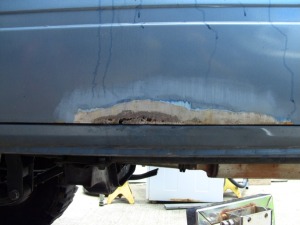
After a rusted area had been cleaned and chemically treated with your choice of inhibitor to kill the rust, the next step depends on what part of the car you’re working on. Next would be to patch and or fill the area and body worked smooth.
If you can get to the back side of the rusted area it is wise to spray an undercoating to seal the back from moisture. Most kinds of rubberized undercoating works well. I use the Bondo brand, Rustoleum, or 3M.
This will ensure that ou get the longest lasting repair on your project. Always treat the back if you can get to it. If you don’t, it’s literally a open invitation for the rust to come back sooner than later.
Another trick that my father started to do about 10 years ago is stopped using galvanized steel to weld in as patches and started to use stainless steel. When welding in galvanized steel you need to make sure to grind of the galvanized area on both sites of the metal before spot welding the patch in. If you didn’t do that, you’ll end up with a lot of popping durung your welds.
By using stainless steel, you only have to grind a little to ensure your spot weld tips sont slip while welding. To give it a rough surface to grip. Don’t worry if you seem a little lost in this explanation, we cover all of this in great detail within the VIP Training section of this site and you can learn more about that here: https://www.learnautobodyandpaint.com/vip and show you exactly how you can repair rust on your project in step-by-step detail. 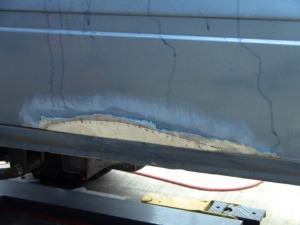
In conclusion, when using stainless, it’s not only easier and faster. It’s stainless so it will NOT rust! It’s a great idea and we only use this steel when using sheet metal for rust repair.
We hope you enjoyed this article and learned a little about how to fix rust and chemicals for rust repair.
If you want to learn and Excel your knowledge about auto body and painting
…then look no further!
Our Vast Community of Auto Body DIY Networkers just like You are sharing ideas, making friends while learning about all of the short-cut strategies on auto painting and automotive customization within the VIP Members Club.
Get ‘inside’ of the Hottest auto body and paint training community on the net. We promise you won’t be left out or alone anymore. Learn Everything You Need To Repairing & Customizing Your Project Yourself![]()
Please comment below and share with your friends, we would love to hear back from you!
Like this post? Learn more about basic auto body and paint tools here!
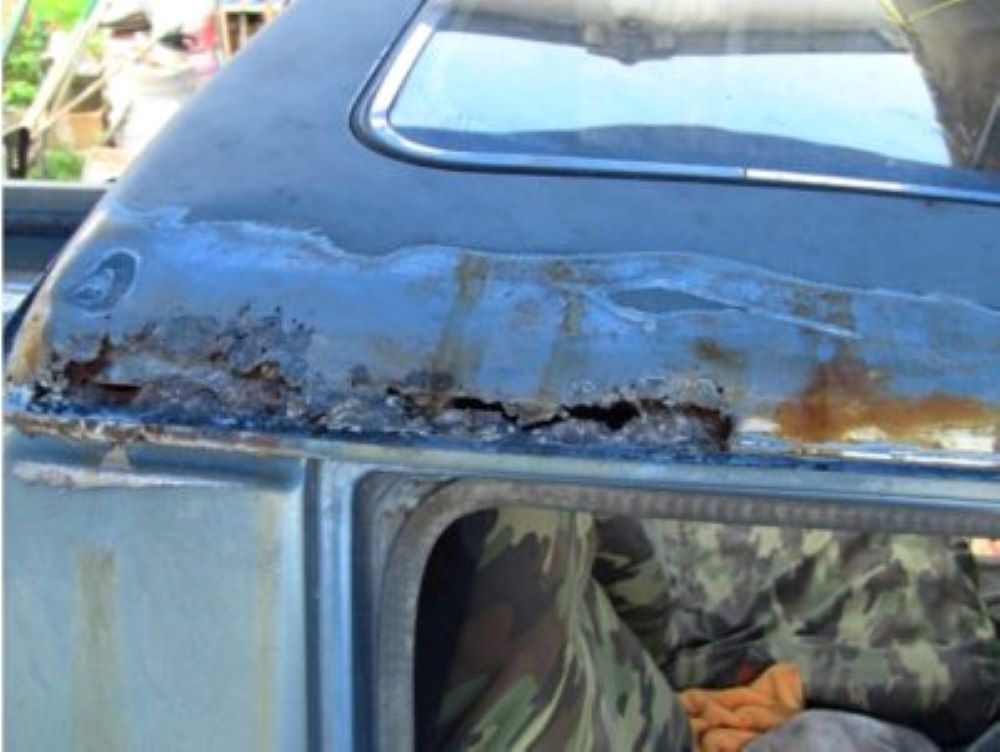
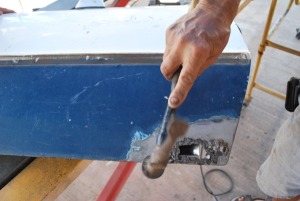
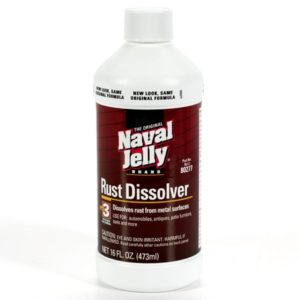
I want to paint my 97 honda accord, the clear coat is too bad,
I want to do it by my self what do i need to get this done?
Thanks.
You need to sand and feather all of the peeling clear coat, prime it and then also have the rest of the cars sanded. Use a 320 or so on a DA orbital sander to get most of the work done. I will then prime all feathered areas, finish by wetsanding the whole car with 400. Then you can paint over that.
It all depends on what you’re doing. You can learn all you need here with video tutorials and full support. Check out VIP here: https://www.learnautobodyandpaint.com/vip
Good luck buddy!
Great article…I’ve worked with POR-15 before…good stuff, but wear gloves as it is difficult to remove off your skin once it dries.
I hope to join the VIP in the near future, I just don’t have enough time right now so my project truck is on hold…still reading though!
Mahalo!
That’s Awesome Woody! POR-15 is cool stuff. I’ll do a post on that stuff soon. Glad you’re enjoying the site!
I just got a 1986 Olds Custom Cruser, that has been setting for 16 years and am planning on restoring it. I’ve ground as much of the rust out I can. I then spray that with Rustoleum Rust Reformer. It seems to work good. Have you tried this and had any luck with it. This car must have a hundred of these spot all over it about an inch or so big. I am a member and have learned a lot from your courses. I would like to submit this project with pictures soon as I figure out how to. You do great work
If I use vinegar for small chips that are rusting how do you recommend applying? I would like for it to really penetrate and dissolve rust but not sure how to keep it from drying up. The vehicle will be parked outside.
Hey Jon, Check out VIP and get comprehensive information on DIY auto body work and paint! https://www.learnautobodyandpaint.com/vip-offer/